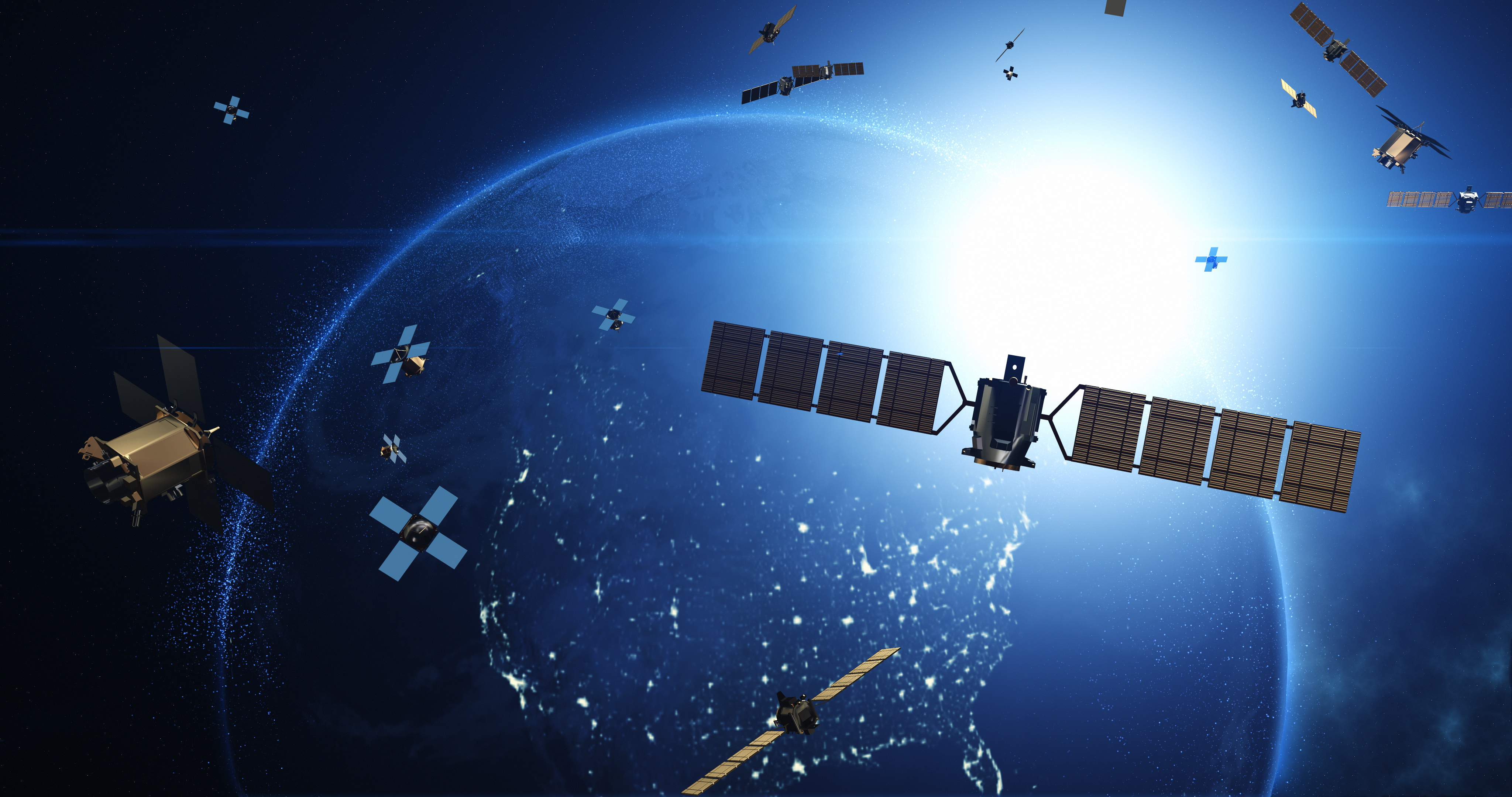Starlink's Internet Beamed From Space Is Taking Off
Satellite broadband provider Starlink is taking over the space market. Amazon’s mega-constellation will soon join the fray, adding to the unprecedented disruption.


To help you understand what is going on in the tech, business and space sectors our highly experienced Kiplinger Letter team will keep you abreast of the latest developments and forecasts (Get a free issue of The Kiplinger Letter or subscribe). You'll get all the latest news first by subscribing, but we will publish many (but not all) of the forecasts a few days afterward online. Here’s the latest…
SpaceX’s big internet bet is taking off. The rocket company’s fleet of small satellites, called Starlink, is delivering fast internet service to millions of satisfied users around the globe. One standout example: There are 400,000 users in Canada, many of them in rural spots. In the U.S., many users of traditional satellite service have shifted to Starlink, which has higher speeds and unlimited data.
The success is a huge feat and comes as a surprise to many space industry insiders. Space-related ventures are always hard, and Starlink’s many obstacles included huge costs and technical challenges.
From just $107.88 $24.99 for Kiplinger Personal Finance
Become a smarter, better informed investor. Subscribe from just $107.88 $24.99, plus get up to 4 Special Issues

Sign up for Kiplinger’s Free Newsletters
Profit and prosper with the best of expert advice on investing, taxes, retirement, personal finance and more - straight to your e-mail.
Profit and prosper with the best of expert advice - straight to your e-mail.
Earlier this year, space intelligence firm Quilty Space estimated that Starlink had 2.7 million global subscribers and was on pace to make $6.6 billion in revenue for 2024. The service had fewer than 250,000 subscribers just two years ago and is rapidly taking customers from the current top two consumer satellite broadband companies, Viasat and Hughes. For example, Viasat has lost over 300,000 subscribers since Starlink’s 2020 debut. That’s half of its broadband customer base, and it’s hard to see how it will ever recover.
It's a remarkable shift for the space industry, which historically has been marked by severe data constraints and a slow pace of change. Amazon’s coming satellite constellation will only add to the disruption for consumer, business and government internet service markets. The retail giant’s Kuiper constellation will consist of thousands of small satellites over the next few years. Expect the retailer to test a variety of business models, such as giving Amazon Prime members discounted internet plans or using the bandwidth to track shipments.
With both SpaceX and Amazon flooding the space market with unprecedented data capacity, traditional satellite companies will have to respond. Starlink’s 6,000-plus satellites already dwarf the entire global satellite capacity available in 2019 by 50-to-1, according to technology market research group Analysys Mason. “Incumbents face an ever-increasing threat from Starlink and, eventually, Kuiper,” said Christopher Baugh, a partner at the company, in a recent article.
Starlink has a huge head start, but Amazon has deep pockets and a steadfast commitment to Kuiper, including courting the U.S. military as a major customer.
Despite the early success, Starlink still faces many challenges. Some markets and areas will be constrained by bandwidth, which affects speed and the number of users offered service. Sales are well below SpaceX’s initial rosy estimates, which means it will have to fight harder for new customers and lobby for government subsidies. Price reductions, antenna rentals and other deals may be necessary to stoke subscriber growth in coming years, especially in some overseas markets. A growing customer base is needed to fund new satellites, launches and ground technology.
The upshot for businesses and consumers: Cheaper satellite internet plans in coming years, making internet beamed from space a more compelling option, even beyond typical hard-to-reach locations. For consumer home service to a dedicated location, Starlink offers plans for $120 per month with unlimited data, plus a one-time fee of $300 for the antenna. Business plans start at $140 per month for 40 gigabytes of monthly data. Starlink recently partnered with Comcast to sell its satellite service to business customers, an example of how it plans to make inroads in new markets.
Many investors wonder if Starlink will go public, but it’s not likely this year, as the company continues to expand and work on top-secret military satellite projects. An IPO is something SpaceX is mulling in the longer term, but it’s in no rush right now.
This forecast first appeared in The Kiplinger Letter, which has been running since 1923 and is a collection of concise weekly forecasts on business and economic trends, as well as what to expect from Washington, to help you understand what’s coming up to make the most of your investments and your money. Subscribe to The Kiplinger Letter.
Profit and prosper with the best of Kiplinger's advice on investing, taxes, retirement, personal finance and much more. Delivered daily. Enter your email in the box and click Sign Me Up.

John Miley is a Senior Associate Editor at The Kiplinger Letter. He mainly covers AI, technology, telecom and education, but will jump on other business topics as needed. In his role, he provides timely forecasts about emerging technologies, business trends and government regulations. He also edits stories for the weekly publication and has written and edited email newsletters.
He holds a BA from Bates College and a master’s degree in magazine journalism from Northwestern University, where he specialized in business reporting. An avid runner and a former decathlete, he has written about fitness and competed in triathlons.
-
 My Top 10 Stock Picks for 2026
My Top 10 Stock Picks for 2026Each year, we ask an expert to pick 10 stocks that have the potential to beat the market over the next 12 months. Here are his choices for 2026.
-
 Special Report: The Future of American Politics
Special Report: The Future of American PoliticsThe Kiplinger Letter The Political Trends and Challenges that Will Define the Next Decade
-
 We're Still Bullish on Stocks
We're Still Bullish on StocksWe're still bullish on stocks for 2026, but now is the time for investors to pull in their horns and dial down risk.
-
 Disney’s Risky Acceptance of AI Videos
Disney’s Risky Acceptance of AI VideosThe Kiplinger Letter Disney will let fans run wild with AI-generated videos of its top characters. The move highlights the uneasy partnership between AI companies and Hollywood.
-
 AI Appliances Aren’t Exciting Buyers…Yet
AI Appliances Aren’t Exciting Buyers…YetThe Kiplinger Letter Artificial intelligence is being embedded into all sorts of appliances. Now sellers need to get customers to care about AI-powered laundry.
-
 What to Expect from the Global Economy in 2026
What to Expect from the Global Economy in 2026The Kiplinger Letter Economic growth across the globe will be highly uneven, with some major economies accelerating while others hit the brakes.
-
 The AI Boom Will Lift IT Spending Next Year
The AI Boom Will Lift IT Spending Next YearThe Kiplinger Letter 2026 will be one of strongest years for the IT industry since the PC boom and early days of the Web in the mid-1990s.
-
 Amid Mounting Uncertainty: Five Forecasts About AI
Amid Mounting Uncertainty: Five Forecasts About AIThe Kiplinger Letter With the risk of overspending on AI data centers hotly debated, here are some forecasts about AI that we can make with some confidence.
-
 Worried About an AI Bubble? Here’s What You Need to Know
Worried About an AI Bubble? Here’s What You Need to KnowThe Kiplinger Letter Though AI is a transformative technology, it’s worth paying attention to the rising economic and financial risks. Here’s some guidance to navigate AI’s future.
-
 Will AI Videos Disrupt Social Media?
Will AI Videos Disrupt Social Media?The Kiplinger Letter With the introduction of OpenAI’s new AI social media app, Sora, the internet is about to be flooded with startling AI-generated videos.
-
 What Services Are Open During the Government Shutdown?
What Services Are Open During the Government Shutdown?The Kiplinger Letter As the shutdown drags on, many basic federal services will increasingly be affected.